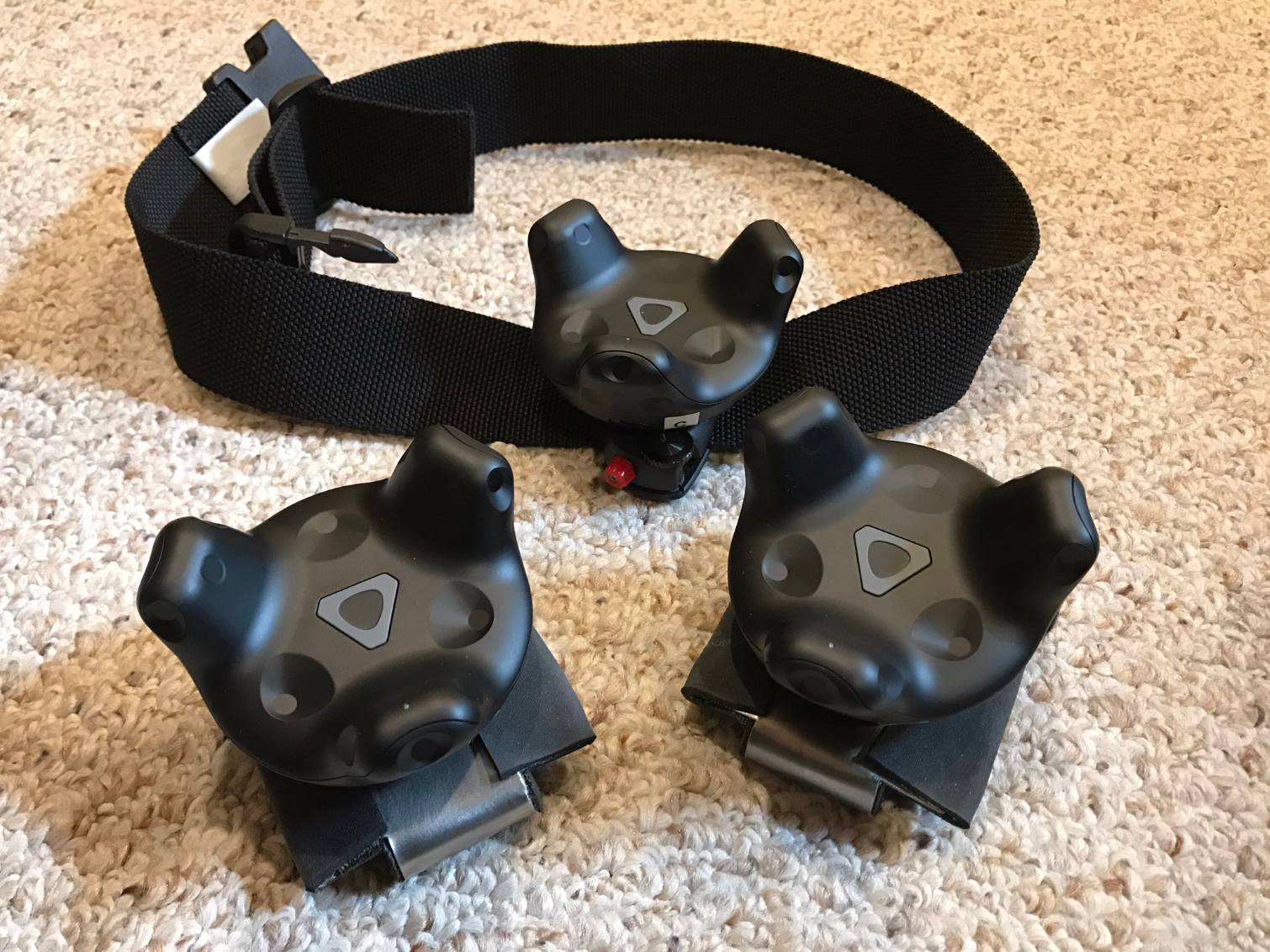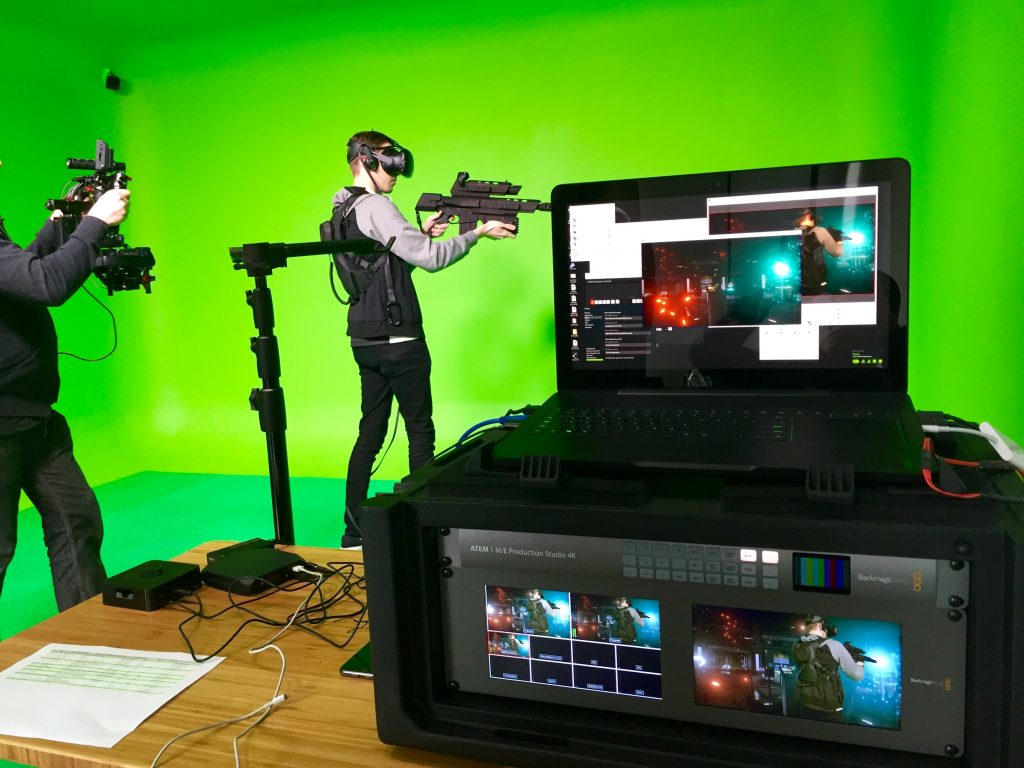HTC Vive Just Dropped A Trove Of Vive Tracker Dev Resources, Vive Tracker Back In Stock
HTC announced that the Vive Trackers are back in stock following a short backorder. The company also released a variety of development resources to help developers get accustomed to the Vive Tracker and what they can use it for.
HTC is working hard to ensure that its Vive VR platform continues to grow and gain popularity. One way the company is doing that is to release a steady stream of resources for developers that simplify development and inspire new ideas. In January, the company revealed the Vive Tracker, which simplifies the peripheral design process and expands the Lighthouse tracking solution to almost anything.
In February and March, HTC sent the first 1,000 trackers to developers who pitched impressive ideas (there were far more than 1,000 requests). Then in late March, HTC allowed any registered developer to purchase a tracker, and those sold out within three days. Suffice it to say, there’s sufficient demand for Vive trackers. Now, they're back in stock.
Along with the new batch of hardware, HTC released tutorials and sample project code to help developers get started with their universal tracking device(s).
HTC previously released code for a full-body tracking solution that uses three Vive Trackers (not Cloudgate’s code from Island 359), and now it’s back with project files and tutorials from a handful of its early partners.
Two Bit Circus released a tutorial and the project files for its location-based game, Piñata Party! The game gives developers an example of a physical game played with VR. In Piñata Party!, you must hit a real piñata with tracked objects, such as a baseball bat. You can find the project files for Piñata Party! here, and the code documentation here. For more information about the game, see the developer’s blog post.
HTC also asked Master of Shapes to share what it learned about Mobile Room-Scale tracking. Master of Shapes created a multiplayer experience called Cover Me!! that links a player with a Vive and a player with a smartphone in an asymmetric room-scale game. One player is in VR with the Vive, and another player uses a tracked pistol peripheral with a smartphone attached to it to join the action. Master of Shapes released a detailed guide to help developers create other mobile room-scale experiences using Unreal Engine.
Get Tom's Hardware's best news and in-depth reviews, straight to your inbox.
Master of Shapes also experimented with creating a custom peripheral for the Vive Tracker. The company built a 3D printed spray paint can that includes a switch under the spray nozzle that is linked the tracker’s integrated GPIO pins. Master of Shapes wrote a blog post detailing the process it went through to build the spray can, which developers can use a resource to understand what challenges they may face when creating a custom controller.
HTC also released a tool called the Vive Tracker Role Changer, which tricks software that doesn’t recognize the Vive Tracker into thinking the tracker is a Vive controller. The Vive Tracker Role Changer is especially useful if you want to use the tracker for mixed reality, as most games don’t recognize the Vive Tracker as VR camera. The role changer software lets you use a tracker for mixed reality recording. You can find the role changer software on the Viveport community hub.
Kevin Carbotte is a contributing writer for Tom's Hardware who primarily covers VR and AR hardware. He has been writing for us for more than four years.
-
uglyduckling81 Strap it too your legs. Run or step in place to simulate movement. Motion sickness solved?Reply -
mrmez Motion sickness is usually caused by a disparity between what you see and what your inner ear balance feels.Reply
Your body figures this is likely caused by being poisoned, so makes you feel horrible so you throw up.
Running in place won't likely solve that, but good news is most people will get used to it with repeated exposure. -
uglyduckling81 Reply19586761 said:Motion sickness is usually caused by a disparity between what you see and what your inner ear balance feels.
Your body figures this is likely caused by being poisoned, so makes you feel horrible so you throw up.
Running in place won't likely solve that, but good news is most people will get used to it with repeated exposure.
Yep read all that as well. I have always suffered from motion sickness so have read a lot about it.
However I have also read people reporting that even having an arm swing motion to simulate walking stops motion sickness in VR. It helps to trick the brain so the usual response to an disparity does not occur.
Walking in place would therefore have the same effect. It might of even been an article on this site that reported trying it. They used the vive controllers and walked in game by swinging the back and forth like you are power walking or something similar. No motion sickness on someone that claims to previously been unable to enjoy VR.
I've not tried personally so can not confirm.
I will say though that frame rate is most important. I had a i5 2500k + GTX970 and was suffering motion sickness in all titles I tried, usually within minutes. Upgraded to a i7 7700k + GTX 1080 and have now been able to play Arizona Sunshine for hours and only stopped because I was ready for a less intense experience (netflix). In fact I have not gotten motion sick a single time since the upgrade and I've put 100x more time into the Vive than I previously had due to the aforementioned reason.
Some of that improvement I would put down to getting more and more used to the experience though that was hard to train seeing as I was only able to play previously for several minutes before being sick. Mostly I put it down to my new PC with much greater frame rate consistency (less frame drops etc).


